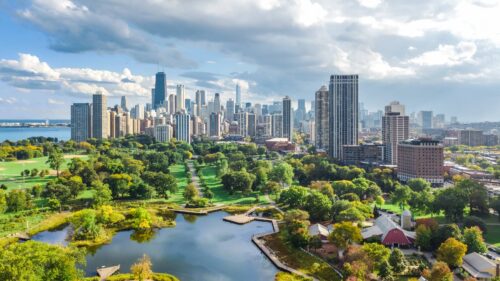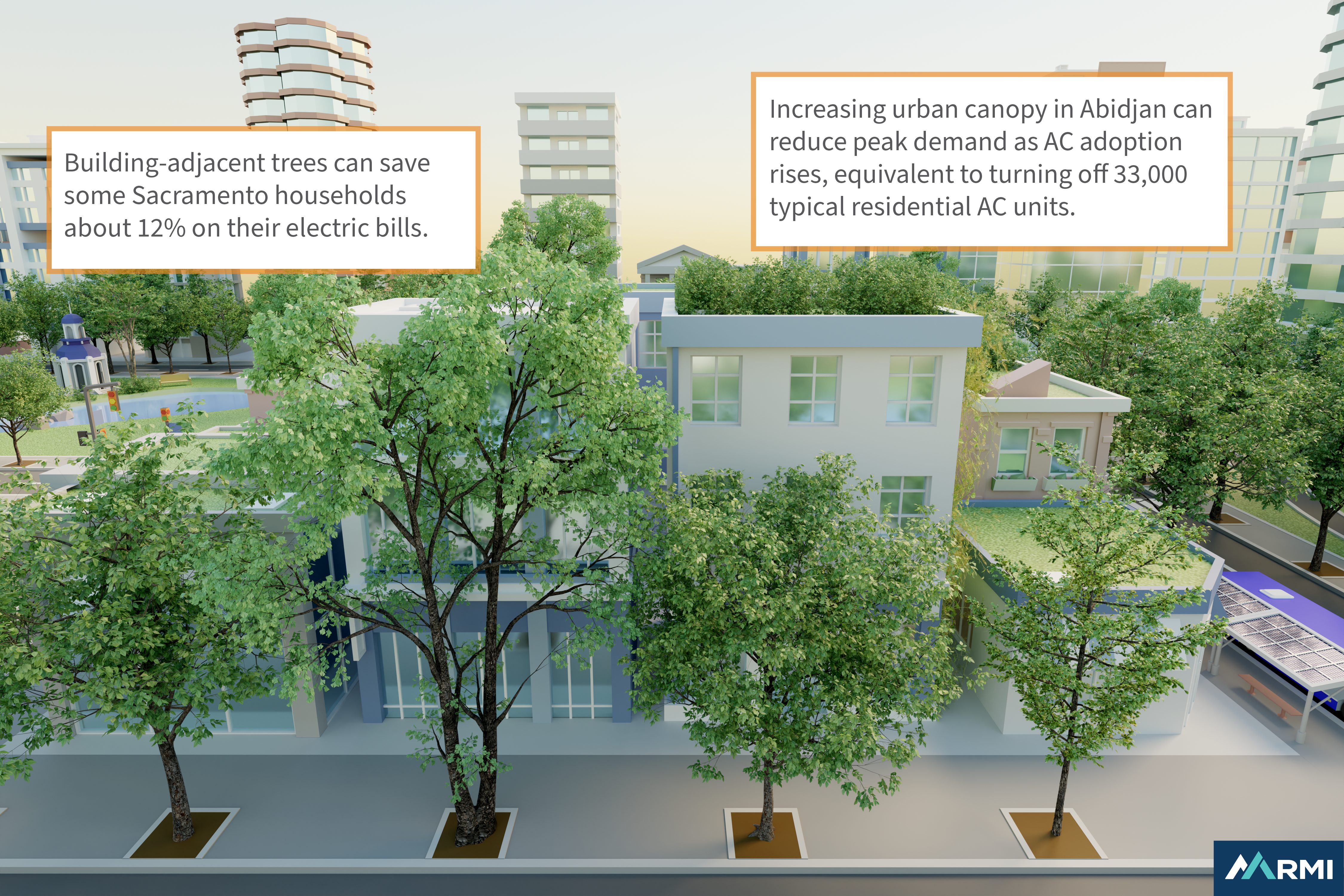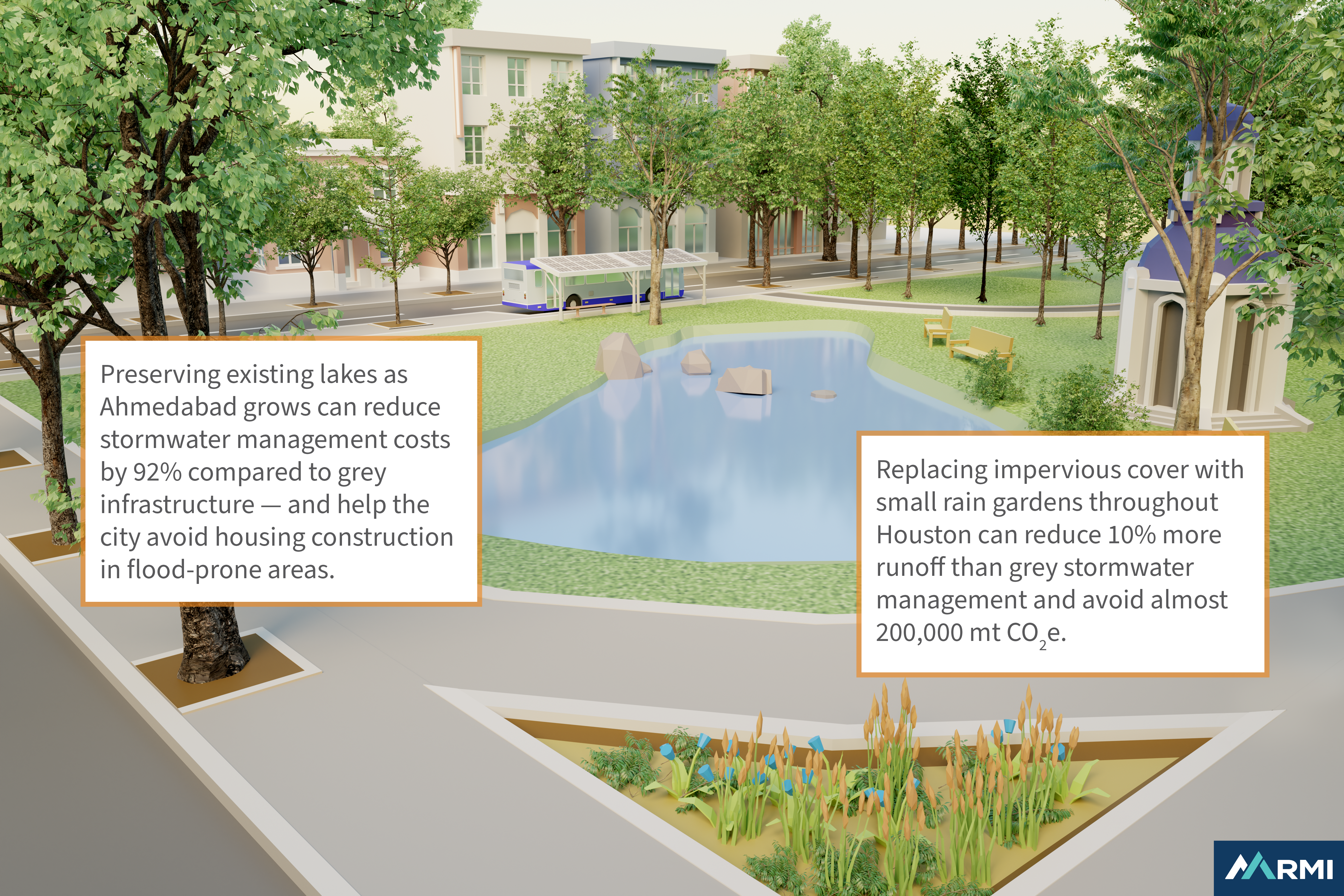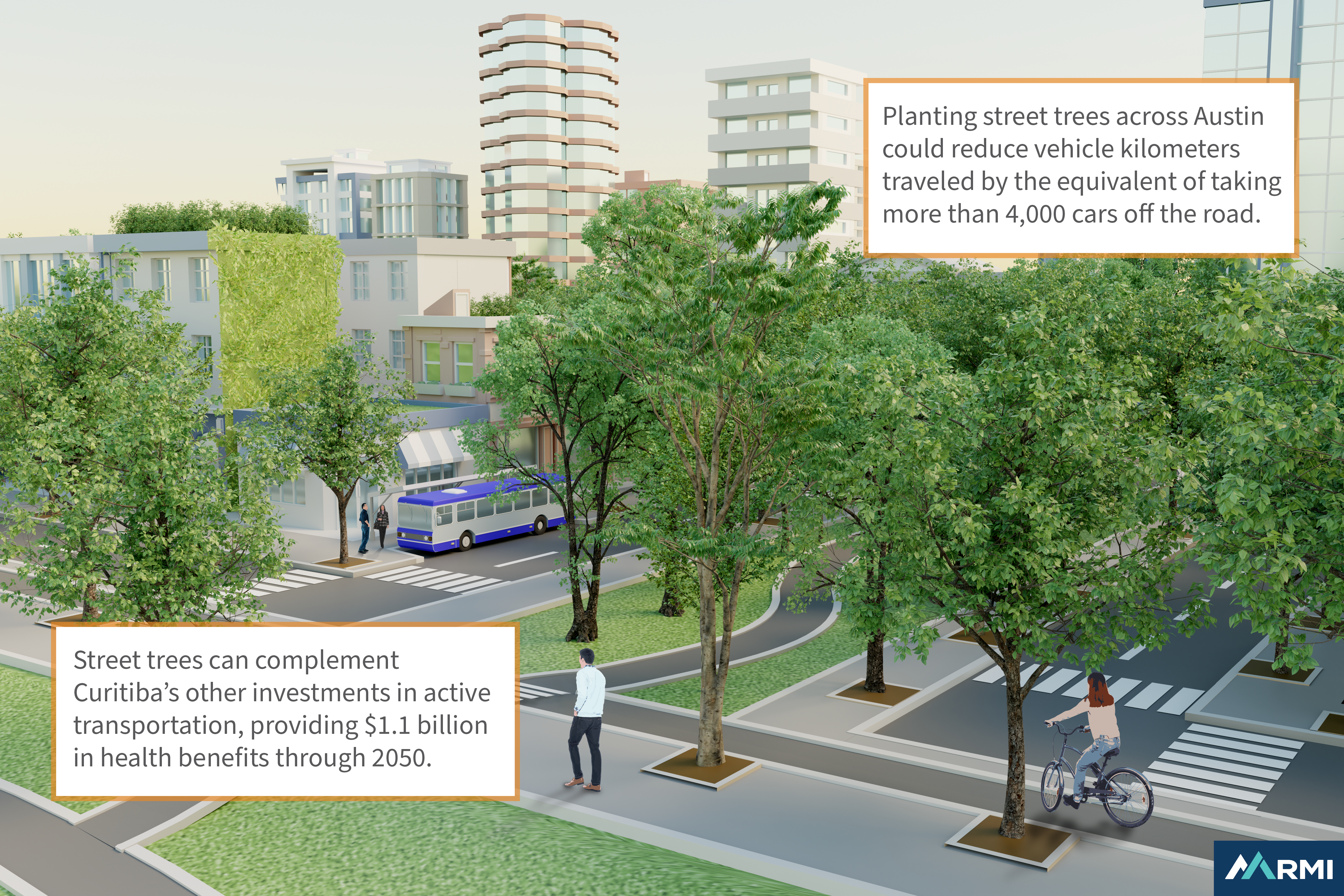
Blueprints for a Green City
Integrating urban nature into cities reduces emissions, saves money, and promotes equity.
Global challenges are pushing cities to their breaking point. Worsening air pollution, regular extreme heat, severe flooding, and other climate-induced extreme weather events claim thousands of lives and do hundreds of billions of dollars in damage every year. Despite these daunting challenges, local governments are taking the lead on climate action in many ways. In their fight to mitigate and adapt to climate change, cities must use every tool available. Urban nature is a solution we cannot afford to overlook.
Many benefits of nature are well known, like recreation, biodiversity, and carbon sequestration. But urban nature — such as a city’s forests, street trees, and bodies of water — delivers countless additional benefits including climate mitigation (lower energy use and emissions), jobs, community connectedness, pollution mitigation, and heat mitigation. In economic terms, these benefits add up: the global value of urban nature’s benefits is nine times the costs, delivering tremendous value for cities and communities.
Despite this immense value, few cities are optimizing their use of nature as a climate and resilience solution. RMI’s new report, Growing to Its Potential: The Value of Urban Nature for Communities, Investors, and the Climate, helps local decision makers and investors make the case for investing in urban nature. In the report, we quantify the overall value of nature’s benefits in cities and — for the first time — specifically quantify urban nature’s potential to reduce energy consumption and associated emissions at the city level. In six cities across the globe, we found urban nature has the power to help cities meet their climate mitigation goals by measurably reducing building energy use, the carbon footprint of stormwater management systems, and transportation emissions.
Urban Nature Eases Our Relentless Energy Demand
Planting trees and adding green roofs to buildings can cool cities naturally, reducing building energy use and peak demand while saving residents money and increasing their comfort. For homes and businesses, nearby trees and green roofs provide ambient cooling, shade, and insulation that reduce the need for air conditioning or heating, lowering both energy bills and greenhouse gas emissions. Greater tree canopy on a city-wide scale can reduce the need for air conditioning and lower peak electricity demand enough so expensive and polluting natural gas “peaker” plants don’t need to start operating. Utilities could also avoid building new natural gas peaker plants in the future.
Cities like Sacramento, California, have been taking advantage of the benefits of urban trees for over 30 years. In 1990, the municipal utility and the Sacramento Tree Foundation began providing residents with free shade trees to lower their electricity bills, and through this and other programs, the Foundation has planted 1.5 million trees to date. The Foundation estimates the trees it has planted in disadvantaged Sacramento communities can save residents $1.3 million from lower energy bills over the trees’ lifetimes. While these are remarkable accomplishments, less-shaded neighborhoods still need more trees so all residents can enjoy their health, economic, and environmental benefits.
“In Sacramento, there can be a 20-degree difference between tree-lined neighborhoods and nearby under-canopied communities that lack trees. Twenty degrees is the difference between memorable summers full of bike rides and barbecues or deadly extreme heat that puts loved ones at risk.
– Jessica Sanders, Executive Director Sacramento Tree Foundation
For example, planting approximately 630,000 more trees across Sacramento could reduce peak demand by 3 percent (over 100 MW) in 2050, potentially avoiding over $150 million in investment in new power generation, savings that could be passed on to residents. This also has important environmental justice implications. As in many cities, peaker plants in Sacramento are disproportionately located in neighborhoods with more people of color and low-income residents — often the same places with the least tree canopy and highest temperatures. Ensuring plentiful nature in these neighborhoods reduces both the heat burden and the health burden from toxic peaker plant emissions and helps cut electricity bills for residents who often have less insulated homes or less efficient air conditioning.
Urban Nature Provides Low-Carbon Stormwater Management with Added Benefits
Conventional “grey” stormwater infrastructure, like concrete basins and pipes, is expensive to build, uses materials that are carbon-intensive to produce, and serves the single purpose of capturing and moving stormwater runoff. Instead, green and blue infrastructure like rain gardens, wetlands, and parks can do the same job of capturing stormwater, reduce flood risk, and provide all of nature’s other benefits. Compared with grey infrastructure, the green approach is often cheaper to build and maintain, and only contains a fraction of the carbon that goes into building and maintaining grey infrastructure.
In Ahmedabad, India, annual monsoon rains bring flooding, loss of life, and property damage. To manage both flood risk and rapid urban development, Ahmedabad has a goal of preserving 15 percent natural land cover, embedding parks, street trees, and small forests within compact, accessible development projects. As Ahmedabad grows, preserving its many existing lakes — instead of paving over them and building grey infrastructure — could help Ahmedabad avoid 87 percent of the embodied carbon of grey infrastructure while providing the same flood protection. The city would also save over $320 million dollars through 2050 in construction and maintenance costs — an average annual savings over six times more than the city spent on monsoon road repairs in 2022. As cities across the Global South grow rapidly, ensuring nature is an integral part of development will pay dividends for climate and beyond.
Urban Nature Reduces Transportation Emissions and Supports Safer Streets
Nature, particularly street trees, can reduce the need to drive in cities by making it more comfortable (and safer in extreme heat) to walk, bike, or take public transit. Significantly reducing emissions from driving requires a combination of strategies, and urban nature is one critical component that also provides tremendous economic and health benefits for households and communities.
Curitiba, Brazil, is a leader in public and active transportation. Its bus rapid transit network has been replicated in over 150 cities and the city plans to double its bike lanes to 400 km by 2025. Yet private car ownership is rapidly increasing as the city’s population grows. Street trees can help slow this trend. Planting trees on just 45 under-shaded streets in Curitiba can reduce car use equivalent to taking 2,000 cars off the road for an entire year. A single household that switches from driving to biking or walking for one trip each day could save over $700 per year in transportation costs.
It’s Time to Invest in Urban Nature
Urban nature provides tremendous value for communities and the climate. By 2030, annual net benefits from nature in all cities could be worth over $2 trillion. But to realize the full value of those benefits, we need to quadruple our annual investment in new urban nature projects through 2030 from about $32 billion to, on average, $135 billion.
Funding urban nature can seem daunting, but cities do not — and should not — have to do it alone! Local governments in the United States can take advantage of unprecedented federal funding opportunities for urban nature such as the $1.5 billion set aside in the Inflation Reduction Act for urban forestry.
Local governments can also take action by joining the Beat the Heat: Nature for Cool Cities Challenge, a partnership between RMI, the Cool Coalition, Sustainable Energy for All, the UN Environment Programme, World Resources Institute, and WWF. The challenge will support Global South cities in designing, implementing, and financing nature-based solutions for heat mitigation. We invite cities, funders, and partners to join us. Take the pledge and learn more here.


